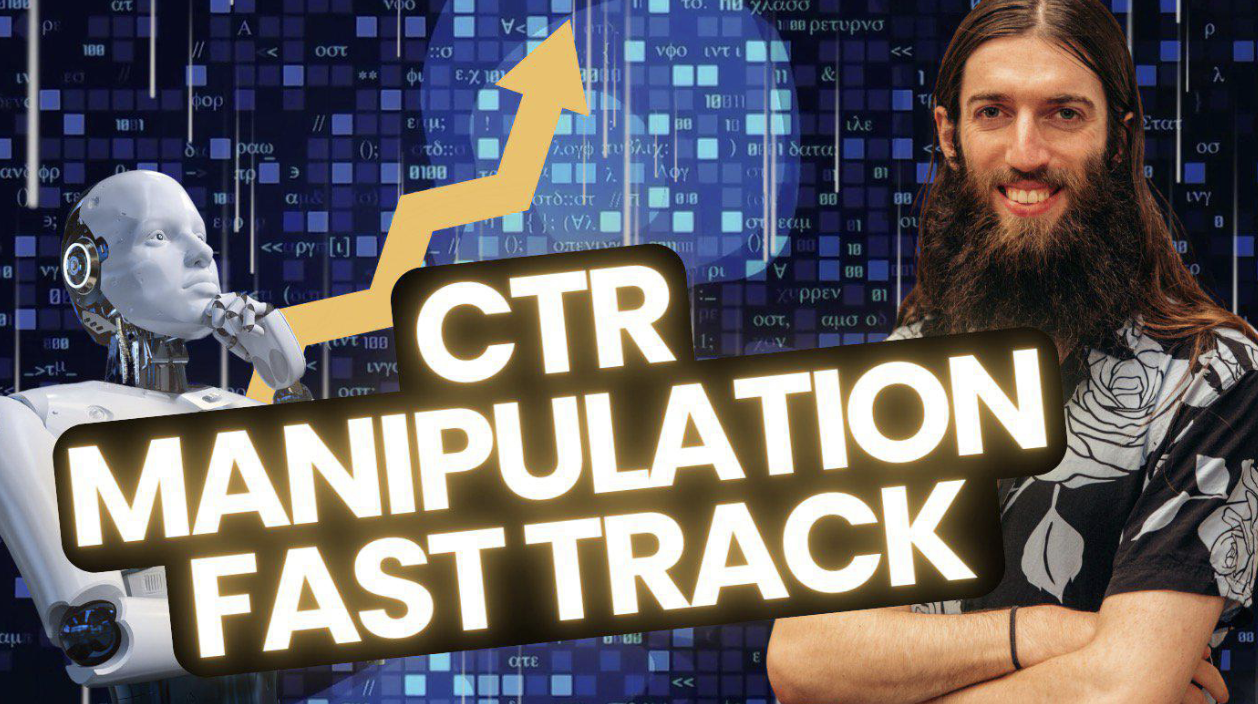Leverage CTR Manipulation to Boost Your SEO Game
In the ever-evolving landscape of search engine optimization, understanding and leveraging click-through rate (CTR) control stands as an essential method for enhancing site presence and positions. As we check out the various techniques and best methods for optimizing CTR, it comes to be clear that the implications for organic traffic and total Search engine optimization efficiency are extensive.

Understanding Click-Through Rate
Understanding click-through rate (CTR) is vital for enhancing online web content and boosting online search engine performance. CTR is a metric that measures the percentage of users that click on a particular link compared to the total number of users that see the web page or material. It acts as a vital indication of just how effectively a site brings in and involves visitors with its online search engine results web pages (SERPs)
A higher CTR typically symbolizes that the content is enticing and relevant to users, possibly resulting in raised website traffic and improved positions on internet search engine. Numerous elements influence CTR, consisting of the quality of meta titles and summaries, using compelling calls-to-action, and the total presentation of the material.
Additionally, comprehending the nuances behind CTR can help content designers and marketers in customizing their techniques to satisfy audience assumptions. By examining CTR data, businesses can identify which web content resonates most with their target group, allowing them to refine their method and eventually drive far better involvement. In this electronic landscape, where competition is intense, grasping CTR can dramatically affect on the internet exposure and customer communication.
Relevance of CTR in SEO
CTR plays a pivotal duty in SEO technique, as it straight affects a site's presence and position on internet search engine results pages. A higher click-through rate indicates to search engines that a page is relevant and engaging to individuals, which can cause enhanced organic positions. Consequently, understanding and optimizing CTR is critical for organizations looking for to boost their on the internet existence.
In addition, internet search engine like Google use CTR as a ranking signal in their formulas. Pages that draw in more clicks often tend to be favored in search engine result, additionally bolstering their exposure. This creates a favorable responses loophole where higher rankings bring about boosted web traffic, consequently reinforcing the page's authority and relevance.
Moreover, CTR can offer valuable understandings into user actions and choices. By assessing click patterns, organizations can recognize what resonates with their audience, allowing them to refine their web content and marketing approaches successfully. This repetitive process not only boosts CTR yet likewise enhances total individual experience.
Strategies for CTR Manipulation
To improve click-through rates successfully, numerous methods can be utilized to boost the appeal of search listings. One crucial technique is to craft engaging titles that resonate with individual intent. Consisting of targeted search phrases naturally within the title can significantly enhance presence while also drawing in clicks.
An additional effective method is to maximize meta descriptions - GMB CTR Manipulation. description A well-written meta summary should summarize the material succinctly and offer a clear worth suggestion, enticing individuals to click. Utilizing action-oriented language can even more improve engagement
Along with textual elements, using structured data can enhance search outcomes with abundant fragments, such as celebrity rankings and images, making listings extra aesthetically appealing. This can lead to higher click-through rates as users are naturally drawn to improved results.

Finally, preserving a constant brand voice across all listings promotes experience and count on, further improving CTR. By using these strategies, businesses can properly adjust their CTR, boosting their total search engine optimization efficiency.
Analyzing Your CTR Efficiency

To assess your CTR efficiency, start by making use of devices like Google Search Console, which supplies insights into exactly how typically your pages show up in search engine result and the equivalent click rates. Segment your information by keyword, gadget, or page to determine patterns and opportunities for improvement. Benchmarking your CTR versus sector standards can better contextualize your efficiency, aiding you identify areas needing interest.
In addition, take into consideration monitoring the CTR across numerous SERP features, such as featured snippets or neighborhood packs, as these can impact customer habits. Routinely assessing your CTR performance permits for educated decision-making, guiding modifications to your web content approach. By understanding how your target market engages with your listings, you can make data-driven selections that enhance presence and interaction, eventually driving even more web traffic to your internet site.
Best Practices for Greater CTR
Achieving a greater click-through price requires a tactical technique to crafting compelling title tags and meta summaries that record user interest. Begin by making sure that your title tags are succinct, preferably between 50 to 60 characters, featuring appropriate keyword phrases that straighten with individual search intent. Furthermore, utilize a interesting see here and action-oriented tone to attract clicks.
Meta directory descriptions should match your title tags, giving a succinct summary of the web content while including relevant key words. Goal for a size of 150 to 160 characters to make sure exposure in search results. Include power words that evoke curiosity or seriousness, encouraging customers to do something about it.
Utilizing structured information can likewise enhance your listings by adding abundant snippets, which boost visibility and involvement. Regularly screening and enhancing these components based on efficiency analytics is vital. Additionally, take into consideration executing A/B screening to figure out which variants generate the greatest CTR.
Lastly, guarantee your material straightens with user expectations set by your title and summary. A smooth experience from search engine result to touchdown page promotes count on and encourages return check outs, ultimately contributing to sustained CTR enhancements.
Final Thought
By comprehending the value of CTR and utilizing reliable strategies, website visibility and rankings can be dramatically enhanced. Regular evaluation of CTR efficiency, coupled with adherence to finest techniques, promotes data-driven adjustments that maximize customer engagement.
CTR is a metric that gauges the percent of users who click on a certain web link compared to the total number of users who see the web page or content. In this digital landscape, where competitors is tough, understanding CTR can dramatically affect on-line presence and individual interaction.
On the other hand, a reduced CTR may suggest that these aspects require optimization to much better line up with user intent.
In addition, think about keeping an eye on the CTR across numerous SERP attributes, such as regional packs or featured fragments, as these can impact customer actions. Routine evaluation of CTR performance, combined with adherence to finest methods, promotes data-driven modifications that enhance customer engagement.